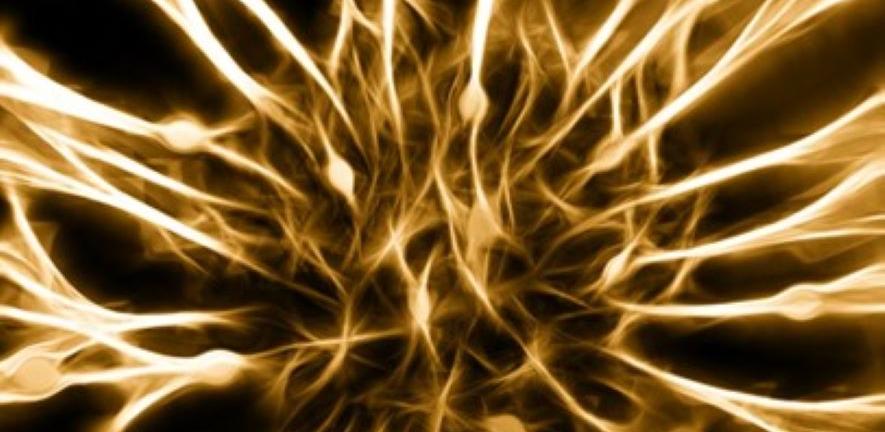
Submitted by Ellie Hall on Tue, 23/08/2022 - 14:47
Researchers from the University of Cambridge and Scuola Internazionale Superiore di Studi Avanzati (SISSA) in Trieste, have developed technology that can activate individual nerve cells with a light impulse. This targeted, non-invasive approach can be used to study the fundamental functions of the nervous system as well as develop potential therapies for neurological diseases.
The research, published in Science Advances, uses techniques developed by Professor Laura Ballerini's team at SISSA in Trieste, in collaboration with the Universities of Chicago and the Department of Chemical Engineering and Biotechnology at Cambridge.
Nanometric photodiodes are tiny electrodes that can be activated by infrared light. Researchers at the University of Chicago have developed a new type of photodiode, which is capable of binding to the surface membrane of nerve cells.
When activated with an infrared ray, the nano-photodiodes send an electrical message to the single nerve cell - or neuron - to which they are bound, regulating the cell’s function. The neuron can then amplify this message to a surrounding network of nerve cells using synapses – the connective junctions that relay messages between nerve cells throughout the body.
Working like a real electrode, but with a non-invasive and very selective approach, these nanotechnologies could be extremely useful for basic research, both to investigate the mechanisms of the nervous system, and also to develop targeted therapies for neurological diseases.
"To investigate the functioning of the nervous system, there is now great interest in technologies that must be both very precise and non-aggressive,” says Professor Ballerini from SISSA, Trieste. “Our strategy goes precisely in this direction. Differently from what has been explored so far, where metal electrodes or an optogenetic combination of genetic manipulation and optical techniques were used, we pursued a new, more specific and less invasive approach.
“This is extremely useful for research purposes because it allows us to see what role a specific neuron plays in a given process and, since infrared is able to penetrate tissue, modulate its activity from the outside in an agile and non-aggressive way.”
But how do you direct the photodiode to attach to the exact neuron you wish to study? This is where the work of Dr Ljiljana Fruk’s group, from the University of Cambridge Department of Chemical Engineering and Biotechnology, comes in. Using bionano engineering, Fruk and her team have developed antibodies that can be programmed to target a specific neuron.
“The photodiode is bound to an antibody that works like a courier, taking and hooking it exactly where we wish to,” says Fruk. “The antibody recognises, with great specificity, a structure that we know is on the surface of the target neuron.”
Working in the laboratory on explant sections of the spinal cord, the SISSA staff focused on the study of the sensory neurons involved in pain pathways.
“We realised that our method is able to selectively stimulate individual cells, allowing us to activate individual neurons with opposite functional roles, for example excitatory or inhibitory,” explains Ballerini. “By activating an excitatory neuron on the spinal dorsal horn with the photodiode, we witnessed an amplification of the pain signal. Vice-versa, by acting on an inhibitory neuron the opposite effect was obtained: the amplification of the pain signal was switched off.”
The research also shows that acting on just one neuron can have a much wider effect on the activity of a whole area. “This is exactly what we verified,” continues Ballerini. “By stimulating a target neuron, we can modulate the response of the whole circuit.
“The functionality and efficiency of this technique, which has so far only been developed in-vitro, could allow us to define neurosensory circuits in a very sophisticated way, obtaining highly detailed information on the role played by individual nerve cells in different mechanisms. This in-depth knowledge would consequently allow increasingly specific therapeutic approaches to be designed at the spinal cord level.”
Read the full paper: A. Thalhammer et al. ‘Distributed interfacing by nanoscale photodiodes enables single-neuron light activation and sensory enhancement in 3D spinal explants’. Science Advances (2022) DOI: 10.1126/sciadv.abp9257
Image credit: Pixabay

